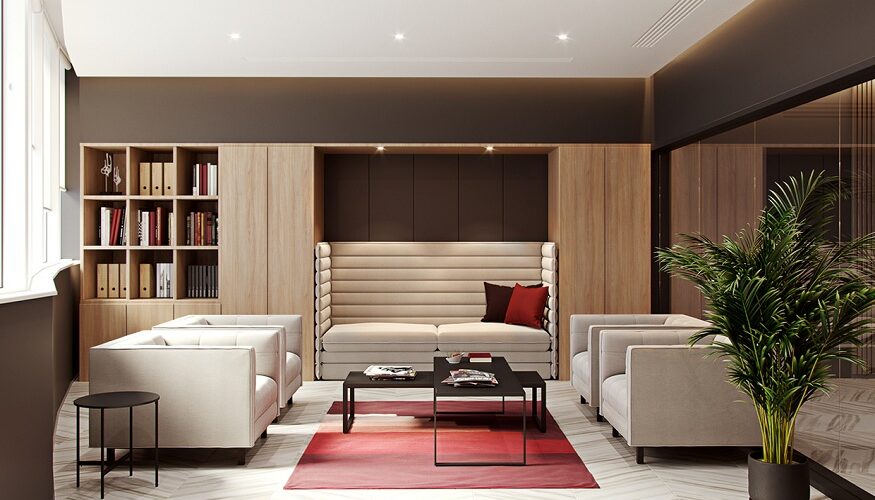A Pooja room is the sacred center of your home—a space where spirituality and tranquility come together. According to Vastu Shastra, the colors we choose for this space play a significant role in channeling positive energy and creating a peaceful ambiance.
Here are 8+ Vastu-approved colors for your Pooja room, along with how they influence the room’s energy and how you can incorporate them into your decor.
1. White – The Color of Purity
White symbolizes purity, divinity, and peace. It is an ideal choice for creating a calm and serene atmosphere in the Pooja room. White walls allow the mind to relax and focus during prayer, free from distractions.
How to use it:
- Paint the walls entirely in white for a clean, minimalist look.
- Complement white walls with simple decor like white marble idols, lamps, or flowers.
- Use white curtains or light furniture to keep the space feeling airy and open.
2. Yellow – The Color of Positivity
Yellow represents warmth, energy, and enlightenment. It’s believed to attract positive vibrations, making it an excellent choice for a spiritual room.
How to use it:
- Opt for soft yellow wall paint for a radiant yet soothing ambiance.
- Add yellow through accents like cushions, rugs, or floral arrangements.
- Pair yellow with white or beige for a balanced and uplifting look.
3. Saffron – The Color of Spirituality
Saffron holds deep spiritual significance in Indian tradition. It is associated with devotion, detachment, and sanctity, making it an excellent color for a Pooja room.
How to use it:
- Paint a feature wall in saffron to highlight the altar or idol.
- Use saffron-colored drapes or mats to tie the look together.
- Include saffron flowers like marigolds to enhance the sacred vibe.
4. Blue – The Color of Serenity
Blue is associated with calmness, stability, and wisdom. Lighter shades of blue are highly recommended in Vastu, as they create a tranquil and harmonious environment.
How to use it:
- Use pastel or powder blue for walls to create a soothing backdrop.
- Consider blue-toned decor items like vases, candle holders, or hand-painted tiles.
- Pair blue with earthy tones to ground the space and maintain balance.
5. Green – The Color of Growth
Green in Vastu signifies growth, balance, and prosperity. It evokes a connection with nature, promoting positivity and peace.
How to use it:
- Add green elements through potted plants, symbolizing vitality and freshness.
- Paint a single wall green or use green accents like wallpaper designs.
- Use emerald or olive green fabric for cushions, prayer mats, or curtains.
Get a budget estimate for your home interior design project with the Beautiful Homes interior cost calculator!
6. Beige – The Color of Simplicity
Beige represents simplicity, neutrality, and balance. It creates an elegant environment for your Pooja room while ensuring it feels warm and inviting.
How to use it:
- Opt for beige walls or marble flooring to maintain a classic, timeless look.
- Match beige with gold or wooden elements to elevate its visual appeal.
- Choose beige for altar fabric or seating cushions for a refined aesthetic.
7. Orange – The Color of Energy
Orange is linked to enthusiasm and inspiration in Vastu. It combines the calming attributes of yellow and the vibrancy of red, making it a powerful choice for the Pooja space.
How to use it:
- Use soft, muted orange for walls or decor to avoid overwhelming the space.
- Incorporate orange through small accessories like prayer beads, bowls, or lamps.
- Combine orange with white or beige to maintain harmony.
8. Gold – The Color of Prosperity
Gold represents abundance, prosperity, and divine energy. While it’s not typically used as a dominant color, adding golden accents can beautifully enhance the sacredness of the Pooja room.
How to use it:
- Choose gold accents for the mandir frame, bells, or diya holders.
- Use golden stencils or borders on walls for ornamental detailing.
- Add gold-toned decor such as candle stands or wall art for a touch of opulence.
9. Silver – The Color of Spiritual Connection
Silver signifies reflection, purity, and mental clarity. It enhances the meditative quality of the Pooja room, making it a perfect accent color for pooja mandir designs.
How to use it:
- Opt for silver-colored idols, plates, or decorative bells to add a contemporary yet spiritual vibe.
- Use silver tones in cushions or trims for a subtle shine.
- Combine silver with white or blue for a soothing and elegant aesthetic.
The right color scheme not only enhances the beauty of your pooja mandir designs but also creates an environment that encourages positivity and spirituality. So, always choose a color that resonates with your personal style while adhering to Vastu principles, ensuring the perfect sanctuary for prayers and meditation.
Confused about home interior costs? With the Beautiful Homes interior cost calculator, get a budget estimate for your interior design project in a few steps.

